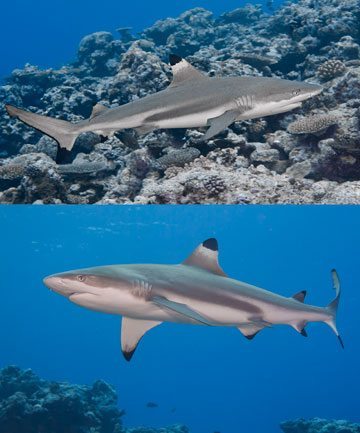Eye-popping colors. Entertaining antics. Bizarre shapes. Photogenic poses. Megafauna. Fascinating behaviors.
As underwater photographers we are blessed with an abundance of fantastic subject material.

Photo by Marty Snyderman
The question is, “What can we do to make our subjects stand out in ways that command viewer attention instead of having our subjects ‘get lost’ in their surroundings?” In some instances the answer is not much. Recognizing those scenarios is a useful skill. As examples, creatures that are masters of camouflage are likely to blend with their surroundings. But there are plenty of other instances in which subjects can be made to stand out. Like if we use strobe light to bring out the colors in subjects in the foregrounds of our photographs. Or if we compose our images in a way that helps create significant contrast between subjects and backgrounds.
Here we’ll concentrate on creating contrast through composition. To take advantage of this technique you need to look at whatever is behind your subject, consider how background elements (whether near or far) will appear in your photograph, and what effect that appearance will have on the way your subject looks in your photograph.
While it might sound obvious to suggest that you consider the appearance of the background, many underwater shooters are so taken in by their subjects that they fail to see, much less consider, the background.
[sam_ad id=”37″ codes=”true”]When photographing reef creatures, creating contrast between a subject and background often involves looking for contrasting colors that cause a subject to stand out against its background. As an example, you might try to compose a shot with a red squirrelfish contrasted against a yellow or green sponge instead of a red one.
When photographing larger marine animals, such as the blacktip reef sharks seen here, it helps to compose your shot with your subject surrounded by properly exposed blue or green water instead of against a background of reef. It can be disappointing to discover that a reef that was seemingly in the distant background caused your subject to lose effect. In many instances getting below a subject and shooting at a upward angle can help you create the desired contrast.



